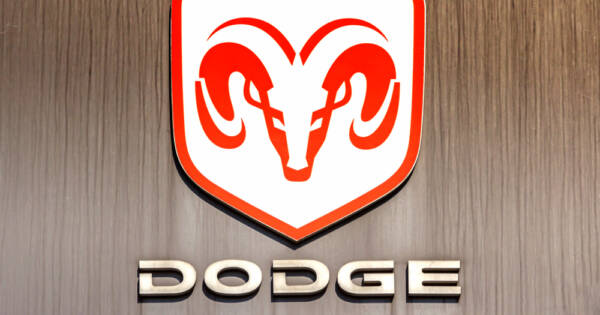As cars have become more complex, so have their warning systems. Modern instrumentation panels are stuffed full of symbols. If things are going well, you won’t notice because they will not be lit. That said, it’s a near inevitability that your dashboard will light up at some point—especially as your vehicle ages. From the straightforward to the mysterious, it’s crucial to know about the dashboard symbols in your car.
The “Traffic Light” Color-Coding System
Some vehicles use a color-coded system for their dashboard symbols. In these cases, the colors mean something similar to traffic lights:
- Green indicates no problem: the system or component is working correctly.
- Yellow indicates something is wrong: use extra caution when driving and take your vehicle in for service as soon as you can.
- Red indicates a serious problem that could compromise your safety: stop driving as soon as possible and take your vehicle in for service immediately.
Most dashboard symbols appear in yellow and/or red. Green dashboard lights are solely for informational purposes. They confirm a system or component is functioning properly. You may see them flash green when you start the ignition or run a system test.
1) Check Engine
Let’s start with one of the most common and dreaded dashboard symbols: the “check engine” light. Most vehicles present it as a pictorial symbol that looks like an engine outline. (Use your imagination.) Some cars add text saying “check engine” to remove any possible doubt.
This symbol’s notorious reputation stems from the fact that it’s hard to know exactly what’s wrong. It means something isn’t right with your engine or your emissions system. The problem could be minor, like a loose hose or wire. It could also be potentially serious. The only way to know for sure is to take your car in for diagnostic service.
2) Battery Warning
Battery problems are often obvious. Your car has trouble starting or won’t start at all, or your interior lights are dim and flickering. However, other battery issues are more ambiguous.
If your battery warning symbol comes on, it likely means there’s some kind of systemic problem. You’ll likely need to replace your battery. The symbol can also indicate other issues with your electrical system, wiring, or alternator.
3) Engine Temperature
This one is also known as the “coolant temperature” warning. It looks like a thermometer dipping into fluid. In most newer cars, this symbol lights up in either yellow or red.
Yellow indicates your engine’s temperature is rising to the higher end of the safe range. It can also mean your coolant levels are running low. Keep an eye on your engine temperature and check your coolant as soon as you get a chance.
A red light means there’s a serious, imminent problem. Your car is about to overheat. Stop right away and call for help. If you keep driving when this light is red, parts of your engine could fuse together. This can lead to damage that cannot be repaired.
4) Transmission Temperature
The transmission temperature symbol looks like a thermometer encased within a gear. It can indicate a moderate or serious problem.
On the moderate (yellow) side, the symbol could indicate your transmission fluid is low. If you’ve been doing a lot of heavy towing, it could also mean the extra weight is straining your system. On the more serious (red) end, the symbol can indicate transmission problems requiring prompt repair.
5) Engine Oil Warning
This symbol features a drop of oil coming out of an oil can. As with other dashboard indicators, it can signal a moderate or serious problem.
Engine oil warnings could simply mean your oil levels are running low and you need to add some. More seriously, it can indicate an oil leak or problems with your pistons or oil pump.
If the light is yellow, try adding some oil. If it’s red, stop driving and take your vehicle to a mechanic.
6) Tire Pressure Warning
The tire pressure indicator features an exclamation mark above a squiggly line meant to represent a tread. Semicircular borders meant to portray a round tire surround the exclamation mark on the sides.
This symbol means your tires have too much or too little air in them. Many modern vehicles have one such indicator for each of the four tires. If there’s a problem with only one tire, the system will tell you. Chances are the tire in question needs to be pumped up. If that doesn’t solve the problem, you could have a more serious leak requiring tire replacement.
7) Lamp/Light Out
This handy warning symbol could save you an expensive ticket. It means one or more of your vehicle’s exterior lamps is out.
Check your headlights, tail lights, and turn indicators. Replace the burned-out light as soon as possible to reduce your accident risk and keep the cops off your back.
8) Airbag Warning
This is one of those dashboard symbols that stays lit up for a few seconds after you turn on your ignition. That’s normal. What isn’t normal is when the symbol stays lit, or when it comes back on after going off and remains lit.
The airbag warning light means that one or more of your vehicle’s airbags may have a problem. It won’t affect your vehicle’s mechanical operation. However, it could put you or your passengers at elevated risk of injury in the event of an accident.
9) Electronic Stability Control (ESC) Symbol
The ESC symbol looks like a car stabilizing itself in slippery conditions. If you are driving on a wet, snowy, or icy road, the symbol may flash. This means the ESC system is actively helping you maintain control.
If the light stays on and isn’t flashing, something isn’t right with your vehicle’s ESC features. Have a mechanic check it out promptly, especially if it’s winter.
10) Braking System Warning Light
The braking system symbol is an exclamation mark within a circle, which is surrounded by curves on both sides. Drivers most often see this light when they start operating the vehicle while its parking brake is engaged.
More worryingly, the symbol can also indicate problems that might interfere with braking power. It may light up if you have worn brake pads, wiring or sensor problems, or low brake fluid. The symbol can also indicate mechanical issues with your vehicle’s anti-lock brakes.
Driving without proper braking capacity is something you should definitely avoid. This is one warning symbol you’ll want to check immediately, even if it’s yellow.
11) Anti-Lock Braking System (ABS) Warning Light
Notably, many vehicles have a separate indicator for their anti-lock braking systems. This means the problem isn’t with your brakes specifically. Rather, it means there’s an issue with your ABS features.
Your ABS comes into play whenever you hit the brakes hard. It prevents your brakes from seizing up and helps you maintain vehicle control.
12) Power Steering Warning Light
This symbol features a steering wheel accompanied by an exclamation mark. It sometimes comes on when your vehicle’s on-board computer needs a reboot. If you see this symbol, try turning off the vehicle and restarting it.
Should that fail to correct the warning, your vehicle’s power steering system might have a problem. Consult a mechanic.
13) Washer Fluid Indicator
Using washer fluid helps keep your windshield free and clear of visual obstructions. However, your reservoir only holds so much fluid. When it runs low or runs out, you will see this symbol light up.
This is an easy fix: simply top up the washer fluid. Your vehicle’s owner’s manual will explain how. Also, read the directions on the washer fluid bottle before proceeding. Some formulations require you to mix the washer fluid with water.
14) High Beam Indicator
This symbol doesn’t follow the red-yellow-green color-coding system. It always appears in blue, because it doesn’t indicate a problem. Rather, it means you have activated your vehicle’s high beams.
High beams are useful in unusually dark conditions. However, they create a blinding effect in opposing traffic. Try not to use them around other motorists.
15) Fog Light Indicator
Many newer vehicles (and some older ones) have fog lights. These are like smaller, supplemental headlights that help oncoming motorists see you in foggy weather.
Your fog light indicator is always green. It simply means your fog lights are on. If this light stays on in clear conditions, you may want to have your system checked. You could have a problem with your vehicle’s sensory equipment.
16) Cold Temperature Warning
Vehicles are more prone to slipping and sliding when temperatures are low and roads are wet. Thus, you should drive with extra caution whenever the mercury dips to cooler levels.
You’ll see this warning indicator flash in cold weather. Most vehicles are configured to display this symbol when the temperature is at or below 4° Celsius (39° Fahrenheit).
17) Diesel Filter Warning
This symbol is exclusively found on vehicles with diesel-powered engines. It depicts vapor and particulate matter passing horizontally through a vertically oriented filter.
Here’s what it means: your diesel vehicle uses filters to remove soot and debris from your exhaust. If the filter is clogged, excess pollutants are passing through your vehicle and coming out in your exhaust. Do the environment a favor and have your filter checked, cleaned, or replaced.
18) Lane Departure Indicator
Many modern vehicles are equipped with advanced sensors capable of extracting information about the road environment. One such feature tracks lane drift and warns you if you’re not following a stable course in your lane.
This light should turn off when you correct yourself. Be more attentive about your lane position: you could be risking an accident. This is especially true if another vehicle is in your blind spot.
19) Fuel Warning Indicator
This familiar symbol looks like a gas pump. Its meaning is simple: you are getting low on gas and you should refuel as soon as possible.
Many vehicles accompany this symbol with an arrow. The arrow reminds you which side your gas tank is on. Some vehicles also display a fuel range when this light comes on. This feature estimates, in kilometers or miles, how long you have until you run out of gas.
Our advice: don’t push it. Fuel up as soon as you can when this light comes on.
20) Open Door Indicator
Suffice it to say that all doors should be firmly closed while the car is in operation. If one or more doors are open or ajar, you will see this light come on.
In most vehicles, this light is configured to reflect the number of doors the car has. It will indicate which of the doors is open. Stop as soon as it is safe, and close the door firmly.




